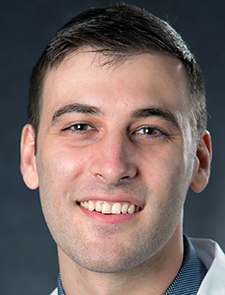
Dr. Long
Clinical question: What is the diagnostic utility of a head CT in hospitalized patients with delirium or altered mental status (AMS) across a variety of clinical settings and what factors, if any, increase that yield?
Background: Delirium is the most common neurological disorder in hospitalized patients and is associated with significant morbidity, mortality, and cost to the health care system. Early identification of causes of AMS, including delirium, is important but difficult given the extensive differential diagnosis in hospitalized patients. Head CTs have become increasingly used (and overused), but their diagnostic yield for AMS is not well characterized.
Study design: Systematic review and meta-analysis
Setting: 46 studies included adult hospitalized patients with a diagnosis of delirium or AMS, admitted either to the emergency department (ED) or an inpatient medical floor (80% of studies) or to the intensive care unit (ICU) (20% of studies). These were about 80% retrospective cohort studies (others prospective or mixed-cohort) in diverse regions with a mean age typically >60 years. The review included all available databases from inception until 2021 (1986 was the earliest included). Studies exclusively of trauma or fall patients were excluded.
Synopsis: In this analysis of 17,241 patients from ED or inpatient studies, and 4,295 patients from ICU studies, the overall yield of a CT head for detection of abnormalities contributing to delirium or AMS was 13% (95% CI, 10.2-15.9) in the ED or inpatient, and 17.4% (95% CI, 10-26.3) in the ICU setting. Chronic findings were considered “normal” in most studies and the majority of head CTs were without contrast. Head CT yield diminished after the year 2000 (19.8% versus 11.1%) and varied by region (8.4% in North America and 25.9% in East Asia). Focal neurologic deficit (FND) was the most consistent predictor of increased yield, up to 19% (95% CI 13.5-25.1), whereas the yield of other categories of patients without FND was approximately 10%.
The study was limited by significant heterogeneity of the included studies, with some risk for bias given that largely observational studies were included, though trends remained consistent on mixed- and random-effects modeling and multivariate regression analyses.
Bottom line: The overall yield of a head CT for detection of abnormalities contributing to delirium or AMS is approximately 13% in the ED or inpatient floor versus 17% in the ICU setting and was particularly helpful with the presence of FND. Although the diagnostic “yield” of head CT is decreasing with overuse, the management implications of a truly abnormal finding suggest a continued role for CT head imaging in select patients.
Citation: Akhtar H, et al. Diagnostic yield of CT head in delirium and altered mental status–a systematic review and meta-analysis. J Am Geriatr Soc. 2023;71(3):946-58.
Dr. Long is an internal medicine resident, PGY-3, at Maine Medical Center, Portland, Maine, and Tufts University School of Medicine, Boston.